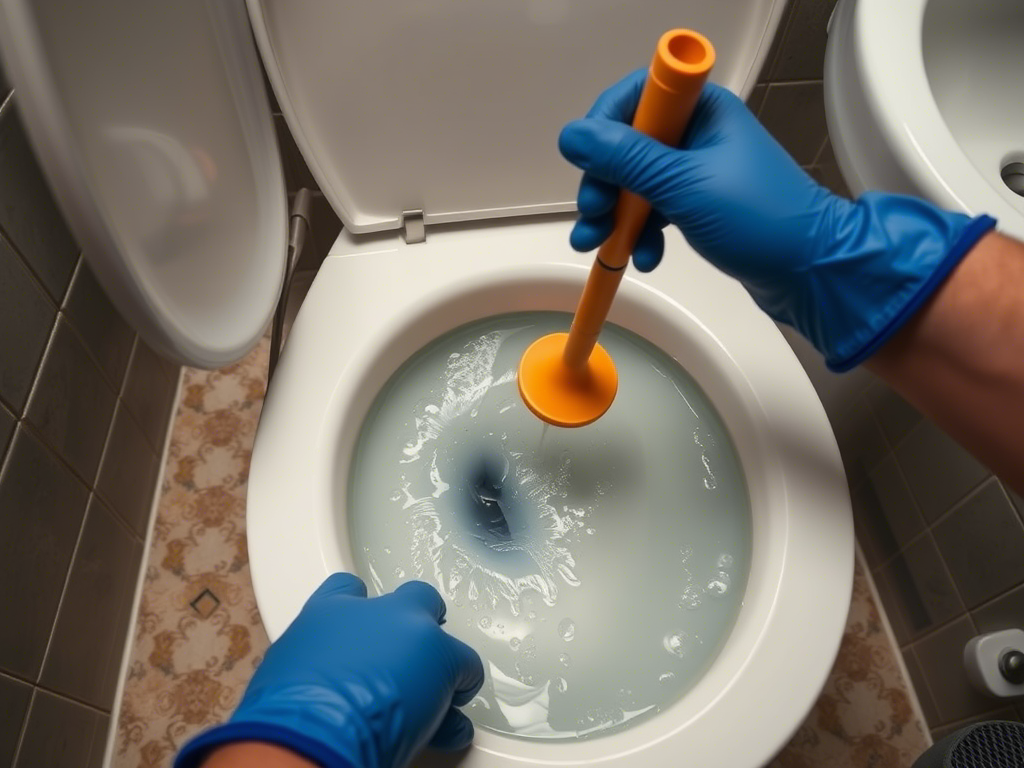A clogged toilet is a common household problem that can quickly turn into a messy disaster if not handled properly. Whether you’re dealing with a minor blockage or a stubborn clog, knowing how to unclog a toilet efficiently can save you time, money, and stress.
In this comprehensive guide, we’ll walk you through the best methods to unclog a toilet, from simple DIY fixes to more advanced techniques. Plus, we’ll share preventive tips to keep your toilet running smoothly.
Why Do Toilets Clog?
Before diving into solutions, it helps to understand why toilets clog in the first place. Common causes include:
- Excessive toilet paper – Using too much can overwhelm the pipes (EPA WaterSense).
- Flushing non-flushable items – Wipes, feminine hygiene products, and paper towels don’t break down easily (Consumer Reports).
- Low-flow toilets – Older or inefficient models may not have enough flushing power (Energy.gov).
- Mineral buildup – Hard water can lead to pipe obstructions over time (USGS Water Science School).
Now, let’s explore the best ways to tackle a clogged toilet.
Method 1: Use a Plunger (The Most Effective Way)
A plunger is the go-to tool for unclogging toilets. Here’s how to use it correctly:
Step-by-Step Plunger Method
- Choose the right plunger – A flange plunger (with an extended rubber flap) works best for toilets (Family Handyman).
- Position the plunger – Place it over the drain hole, ensuring a tight seal.
- Add water if needed – If the bowl is low, pour in some warm water to cover the plunger.
- Push and pull vigorously – Use firm, quick plunges to create suction and dislodge the clog.
- Flush to test – If the water drains normally, you’ve succeeded!
💡 Pro Tip: Avoid using a sink plunger—it won’t create enough suction for a toilet (This Old House).
Method 2: DIY Drain Snake (For Stubborn Clogs)
If the plunger doesn’t work, a drain snake (or auger) can help. You can make a DIY version using a wire coat hanger:
How to Make a DIY Toilet Snake
- Straighten a wire hanger – Leave a small hook at one end.
- Insert into the drain – Gently push until you feel resistance.
- Twist and pull – Rotate the wire to break up or hook the clog.
- Remove debris – Pull out any waste carefully.
- Flush to check – If the water flows freely, the clog is cleared.
For tougher clogs, consider using a professional toilet auger (Bob Vila).
Method 3: Hot Water and Dish Soap (Gentle Approach)
For minor clogs, a mix of hot water and dish soap can help break down blockages.
Steps for Hot Water & Soap Method
- Squeeze dish soap – Add ½ cup into the toilet bowl.
- Pour hot (not boiling) water – Slowly pour from waist height to increase pressure.
- Let it sit for 15-20 minutes – The soap helps lubricate the pipes.
- Flush to test – If the water drains, the clog is gone.
⚠️ Warning: Avoid boiling water—it can crack porcelain (American Standard).
Method 4: Baking Soda and Vinegar (Natural Solution)
This fizzy combo can dissolve organic clogs without harsh chemicals.
Baking Soda & Vinegar Steps
- Pour 1 cup of baking soda into the toilet.
- Add 2 cups of vinegar – Expect bubbling (this helps break down debris).
- Wait 30 minutes – Let the mixture work.
- Flush with hot water – Check if the clog is cleared.
🔍 Related: How to Clean a Toilet Naturally
Method 5: Wet/Dry Vacuum (For Extreme Cases)
If you have a wet/dry vacuum, you can use it to suck out the clog.
How to Use a Vacuum for a Clogged Toilet
- Set the vacuum to liquid mode – Ensure it’s safe for water (Home Depot).
- Create a seal – Use an attachment to cover the drain.
- Turn it on – Let the suction pull out the obstruction.
- Dispose of waste properly – Empty the vacuum outside.
When to Call a Plumber
If none of these methods work, you may have a deep sewer line clog. Signs you need professional help:
- Multiple drains are slow or backed up
- Gurgling sounds from pipes (Angi)
- Water backing up into other fixtures
📌 Need a plumber? Check out our guide on How to Choose the Right Plumber.
Prevent Future Toilet Clogs
Avoid repeat clogs with these simple habits:
✔ Use less toilet paper – Flush in smaller amounts if needed.
✔ Avoid flushing non-degradable items – Stick to toilet paper only (Plumbing Manufacturers International).
✔ Install a bidet – Reduces reliance on paper.
✔ Regular maintenance – Monthly baking soda & vinegar flushes help.
FAQs About Unclogging a Toilet
1. What’s the fastest way to unclog a toilet?
A plunger is the quickest and most effective method for most clogs (Popular Mechanics).
2. Can I use chemical drain cleaners?
Avoid them—they can damage pipes and are harmful to the environment (NIH Household Products Database).
3. Why does my toilet keep clogging?
Frequent clogs may indicate a deeper issue, like a partial sewer line blockage or a low-flow toilet problem (This Old House).
4. Can a clogged toilet fix itself?
Sometimes, if given time (e.g., overnight), minor clogs may loosen, but it’s best to act quickly.
5. What should I do if water is overflowing?
Turn off the water supply valve behind the toilet immediately to prevent flooding (Red Cross Home Flood Safety).
Final Thoughts
Unclogging a toilet doesn’t have to be a nightmare. With the right tools and techniques—whether it’s a plunger, DIY snake, or natural remedies—you can tackle most blockages quickly.
For more home improvement tips, check out our other guides on TheHowToTips.com.
Got a stubborn clog? Try these methods and let us know what worked for you in the comments! 🚽✨

